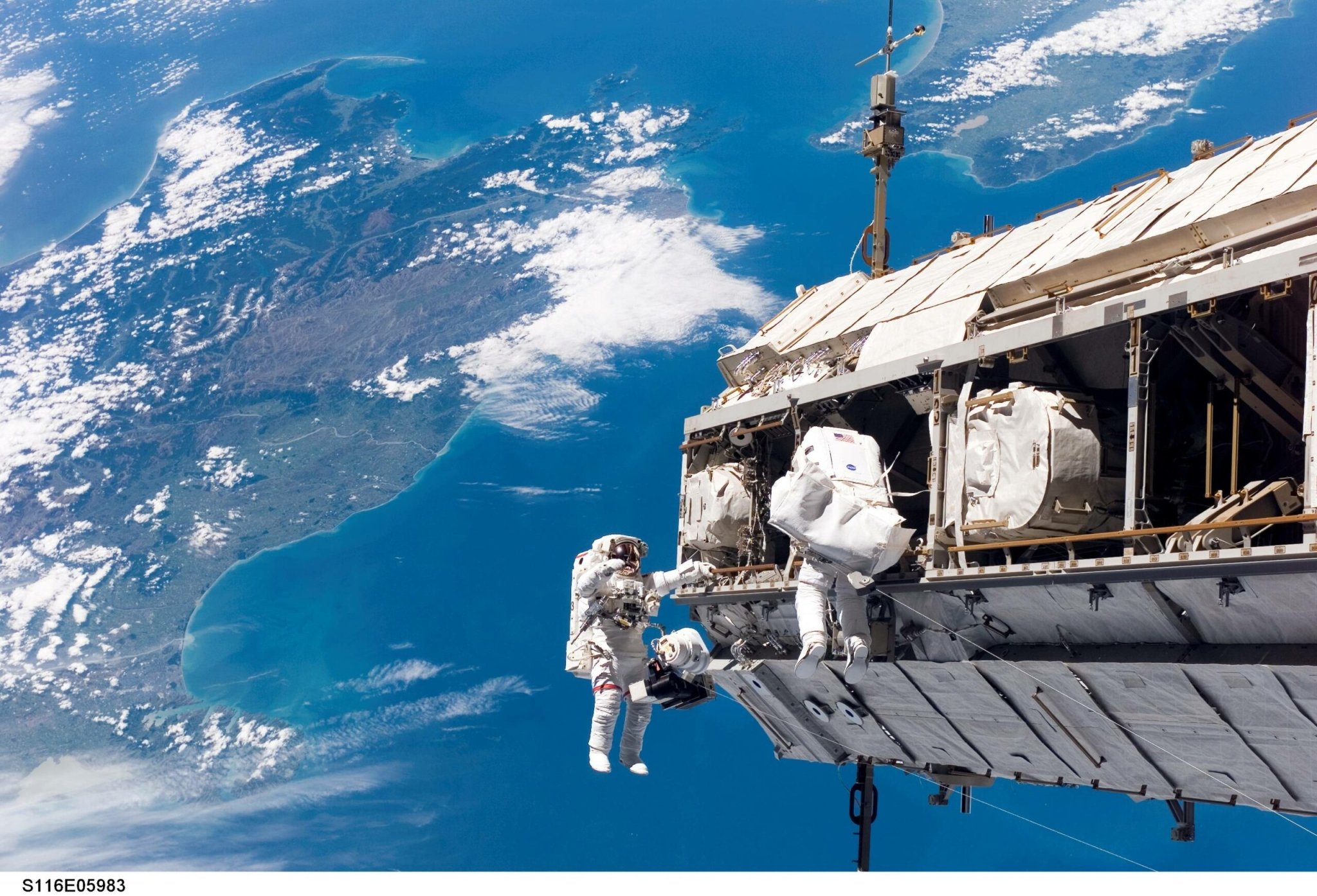

In the movie The Martian, a stranded astronaut is able to survive for years in a habitat that NASA originally designed to last 30 days. The movie is fictional, but the premise is not so far from reality: a lot of the stuff that NASA designs ends up lasting well beyond its original expiration date–from Mars rovers to the Kepler Space Telescope.
From 1998 to 2011, five different space agencies assembled the the largest structure ever built in space. In the beginning, NASA thought the International Space Station would last through 2015. Well, it’s 2015 now, and the station’s 15-year anniversary just passed. It’s holding up pretty well for such an old-timer. Could it survive another 15 years?
Over the past few years, the ISS’s life expectancy has been extended to 2020, and then 2024. That gives us another 9 years to perform fun science experiments in microgravity and test out commercial spacecraft as well as technologies that could help us on a journey to Mars. But NASA may be able to squeeze even more years out of the space habitat.
A Life Beyond 2024?
Boeing, the primary contractor for the ISS, is in the midst of a feasibility study to see if the station could survive until 2028.
As the ISS orbits our planet, it gets baked by the sun on one side of Earth, then freezes on the other, darker side. Those thermal extremes can cause its materials to expand and contract, and that can lead to wear and tear. The docking and undocking of spacecraft also causes mechanical stress, says Brad Cothran, Boeing’s director of sustaining engineering for the ISS program.
Nevertheless, the space station stands a good chance of surviving to 2028. “Right now we don’t see any show stoppers,” Cothran told Popular Science, though he adds: “There are things we’re going to have to address.”
Weak Points
With the constant addition of new science experiments on the ISS, the station’s solar panels are going to need to collect more energy than ever. Unfortunately, they’re looking a little haggard after their 15 years in orbit. Space radiation blackens the transparent glass over the solar cells, blocking some sunlight from entering, and every now and then small bits of space debris take out a string of solar cells.
When the space station was new, its solar arrays produced 220 kilowatts of power. By 2028, Boeing predicts they will only generate 160 kilowatts.
“We think we can get to 2028,” says Cothran, “but it’s something that we’ll have address.”
Even if the solar panels crap out, it wouldn’t necessarily mean the end of the ISS. Boeing has an idea to overlay the old panels with newer, more efficient cells, should the need arise.
“Right now we don’t see any show stoppers.”
Then there’s just the usual problem of technological obsolescence.
“The computers are already kind of outdated,” says Daniel Huot, a NASA public affairs officer. “A lot of people rip on us for still using Windows XP on a couple of things.” But he added that the electronics that the astronauts usually interface with are updated on a semi-regular basis.
The ISS’s Internet connection could also be an annoyance in future.
“The station’s primary objective is to perform science, but if you look at today’s experiments–compared to 15 years ago, and compared to where we’re gonna be in another 15 years–require much more data to come back down to the ground,” says Cothran. “We’re going to need more bandwidth.”
Astronauts have mentioned the moderately slow Internet connection on the ISS. Boeing is working on getting it up to speed, and the will continue to fight to keep up.
“We’re going to need more bandwidth.”
But these are minor points that are relatively easy to fix or replace. In fact, says Cothran, the only thing that would really make the ISS uninhabitable would be if the hull of the space station threatened to breach, exposing astronauts to the deadly, freezing vacuum of space. But so far, so good.
“By 2028, the first elements of the space station will be 30 years old,” says Huot. “[Boeing] just has to do the analysis, and they very well could come back and say more years are possible. It’s not out of the realm of possibility.”
Cothran agrees. “Right now, I don’t see any reason why it can’t keep flying beyond 2028.”

A Stepping Stone To Mars
In the ISS’s 15 years of operation, the biggest challenge, says Cothran, has been to maintain the regenerative life systems. Those are the systems that recycle water, provide oxygen for the astronauts to breath, and scrub carbon dioxide out of the air. These critical systems have gone through multiple generations of technology, and as a result of this learning experience, Cothran thinks a manned mission to Mars might actually make it there and back.
Likely the ISS will continue to be an important stepping stone to Mars. Life support systems, potential habitats, and other equipment astronauts might need to survive on Mars could be tested on the International Space Station. From there, the equipment would likely be tested on or in orbit around the Moon, before heading to Mars.
On the other hand, NASA is on a limited budget, and maintaining the space station costs about $3.5 billion per year. That’s a lot of money that could be used to fund other science missions–including investing in technology that could carry humans to Mars.
If NASA decides not to inhabit the ISS beyond 2024, the space station would experience a fiery death as it plunges through the Earth’s atmosphere on a controlled trajectory, to splash down into the ocean
“I hope that doesn’t happen during my lifetime,” says Cothran.
